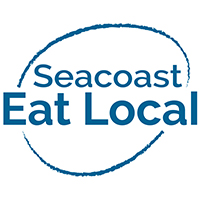 Don’t look now, but as the local food movement gathers momentum, the range of products offered is growing as well. Eating everything from heirloom tomatoes in the summer to fingerling potatoes in the winter, consumers have more choices than ever before. Lamb is one of those choices.
Don’t look now, but as the local food movement gathers momentum, the range of products offered is growing as well. Eating everything from heirloom tomatoes in the summer to fingerling potatoes in the winter, consumers have more choices than ever before. Lamb is one of those choices.
As with all locally grown and raised products, area farms take a great deal of pride in the breeds of sheep they raise and how they treat their animals. For instance, John Hutton of Coppal House Farm manages a nearly self-sustaining cycle with his farm and flock, including growing his own grains, and is quick to point out that local lamb tends to come from small farms, versus being shipped from large commercial farms in New Zealand. In addition, most local farms graze their sheep, helping to maintain precious open space. From the John Crow Farm website: “We are committed to farming practices that care for our animals and for the land. Every product you eat from our farm has been raised and tended by hand. We provide high quality, nutritious food while being caring stewards of New England land and our community.” If you have any questions at all, local farmers are more than happy to discuss their products and methods with you.
For anyone not familiar with purchasing lamb, here is a quick primer on cuts:
For Grilling
Rib Chops: One of the most popular cuts is individual rib chops, with a tender eye of lean, pink meat and a thick layer of flavorful fat.
Loin Chops: These diminutive T-bone steaks contain a portion of the loin and tenderloin and are the leanest, most tender cuts. Cooked quickly on the grill, they develop a caramelized crust and have a pink, juicy center.
Sirloin Chop: The thick, inexpensive steaks cut from the fat, sirloin end of the lamb’s leg and hip section are tender enough to grill or broil, steak house style.
For Slow-cooking
Shanks: The shank is the muscular bottom portion of the leg. It is the ultimate cut for slow braises that require rich, intense flavor, such as North African tagines.
For Stews
Stew Meat: You can make rich stews using pieces cut from almost any part of a lamb, but stew meat from the shoulder is best, as it becomes incomparably tender during stewing and braising.
For Roasting
Leg: This generous cut, which can weigh anywhere from five to nine pounds, is the perennial choice for holiday feasts. The whole leg—which comprises both the narrow shank and the plump sirloin—can be simply seasoned with salt and pepper or a spice rub and roasted with the bone in.
In addition to farms selling cuts of lamb, there are some value-added foods containing lamb also sold at the market, such as Riverslea Farm’s shepherd’s pie and lamb stew and Popper’s Artisanal Meats products. Finally, if you want to take the plunge but are still a bit wary, Liz Conrad of Riverslea Farm recommends using ground lamb in a meal that you’re familiar with and that the whole family likes, such as adding ground lamb to pasta sauce or barbequing lamb kebabs on the grill.
Recipes: Irish Lamb Stew, Roasted Onions Stuffed with Ground Lamb, Liz’s Braised Lamb Shanks, or any of these lamb recipes.
Coppal House Farm, John Crow Farm, Patridge Farm, Popper’s Artisanal Meats, Riverslea Farm, and Top of the Hill Farm will all be bringing our featured food, lamb, to the Seacoast Eat Local Winter Farmers’ Market on Saturday, January 12th in Exeter!
